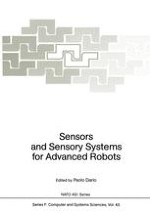1988 | OriginalPaper | Buchkapitel
Physiology and Psychophysics in Taste and Smell
verfasst von : K. C. Persaud, J. A. DeSimone, G. L. Heck
Erschienen in: Sensors and Sensory Systems for Advanced Robots
Verlag: Springer Berlin Heidelberg
Enthalten in: Professional Book Archive
Aktivieren Sie unsere intelligente Suche, um passende Fachinhalte oder Patente zu finden.
Wählen Sie Textabschnitte aus um mit Künstlicher Intelligenz passenden Patente zu finden. powered by
Markieren Sie Textabschnitte, um KI-gestützt weitere passende Inhalte zu finden. powered by
The ability to recognize chemical stimuli in the external environment is a feature of living organisms ranging from bacteria to man. It has played a crucial role in the search for food, detection of adverse environments, and sexual behaviour. The transduction process of chemoreception in both lower organisms and higher vertebrates consists of binding of chemical stimuli to a receptor membrane, giving rise to a receptor generator potential. This potential either triggers a chemotactic response in lower organisms or is transmitted in the form of neural impulses to signal processing centres in higher animals. In vertebrates, chemical stimuli in external environments are received at gustatory and olfactory receptor cells. These cells detect chemicals, encode information about the intensity, duration and quality and transmit it to higher processing centres. This chapter discusses some aspects of current research in the physiology and psychophysics of taste and smell in vertebrates.
